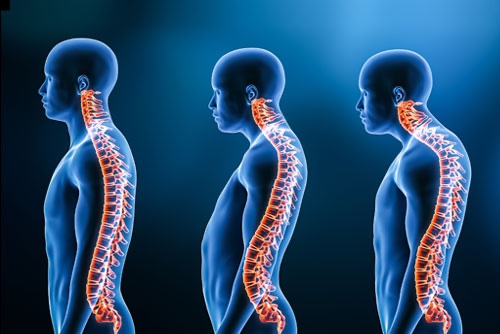Minimally Invasive Spine Surgery (MISS) is a modern surgical technique designed to treat various spinal conditions with minimal tissue damage.
Your spine plays a crucial role in supporting your entire body. It enables you to stand upright, move, bend, and twist, all while protecting the spinal cord and nerves that communicate between the brain and the rest of the body. While we often focus on treating spine-related problems once they arise, one of the most effective ways to prevent long-term issues and maintain overall spinal health is through good posture.
Whether sitting at a desk, standing, or even sleeping, the position you hold throughout the day can significantly impact your spine’s health. In this article, we’ll explore why posture is so important, how poor posture can lead to spinal problems, and what steps you can take to improve your posture and protect your spine.
What is Posture?
Posture refers to the way your body is aligned and positioned when sitting, standing, or lying down. Proper posture ensures that the spine maintains its natural curves while distributing weight evenly across your joints and muscles. When posture is correct, your body moves and functions with greater efficiency, reducing the strain on muscles and ligaments.
On the other hand, poor posture places unnecessary stress on the spine and surrounding muscles, which can lead to discomfort, pain, and long-term health problems.
How Poor Posture Affects the Spine
Poor posture is often the result of habits formed over time, such as slouching at a desk or hunching over while using a phone. The negative effects of bad posture can add up, leading to serious complications for your spine. Here’s how poor posture can affect your spinal health:
- Increased Pressure on the Spine
When your spine is out of alignment, certain areas bear more weight than they should, leading to excessive pressure on the discs, joints, and vertebrae. This pressure can cause disc degeneration, misalignment, or herniated discs over time. Back and Neck Pain
Slouching, slumping, or leaning forward can strain the muscles in your back and neck, leading to tension, soreness, or chronic pain. Over time, this can result in conditions like muscle imbalances, spinal misalignments, and even conditions like scoliosis or kyphosis.Decreased Mobility and Flexibility
Poor posture limits your spine’s ability to move freely. As the muscles around your spine become tight and stiff, you may notice reduced flexibility, making it difficult to perform daily tasks or engage in physical activities.Headaches and Migraines
Slouching and forward head posture (where the head juts forward from the neck) can strain the muscles in the neck and shoulders, leading to tension headaches and migraines. This type of posture can also disrupt circulation and cause discomfort in the head and neck region.Poor Nerve Function
The spinal cord, which is housed within the spine, sends signals to and from the brain to various parts of the body. Poor posture can cause nerve compression, leading to numbness, tingling, or weakness in the arms, legs, or back.Common Posture Problems
Certain posture problems are more common than others, especially for people who spend long hours at desks or work in sedentary jobs. Some of the most common posture-related issues include:Forward Head Posture
This occurs when the head is positioned too far forward from the spine, often seen in people who sit at computers or look down at their phones for long periods. This posture places strain on the neck and upper back muscles.Rounded Shoulders
Rounded shoulders occur when the shoulders are hunched forward, often due to slouching or poor ergonomic setup at a workstation. This position can cause tension and discomfort in the shoulders and upper back.
How to Improve Your Posture
Now that we understand the importance of posture, let’s explore some practical tips to help you maintain good spinal alignment and prevent long-term issues.
- Take Frequent Breaks
Sitting for extended periods can lead to poor posture and muscle stiffness. Set a timer to remind yourself to stand up, stretch, and walk around every 30 minutes. This helps prevent strain and keeps your spine in good alignment. - Stand with Proper Alignment
When standing, keep your weight evenly distributed between both feet and avoid locking your knees. Keep your shoulders back and down, with your chin slightly tucked in to avoid jutting your head forward. - Strengthen Your Core
Strong abdominal muscles support the spine and help maintain good posture. Incorporate core-strengthening exercises like planks, bridges, and abdominal crunches into your routine to support your lower back and improve your posture. - Use Ergonomic Equipment
If you spend long hours working at a desk, invest in ergonomic furniture and accessories, such as an adjustable chair, a keyboard that allows your arms to be at a neutral angle, and a monitor positioned at eye level. This helps ensure that your workstation promotes good posture. - Sleep in a Spinal-Friendly Position
Sleeping in a position that maintains the natural curve of your spine can reduce the risk of back and neck pain. Try sleeping on your back with a pillow that supports the neck, or sleep on your side with a pillow between your knees to keep the spine aligned. - Get Professional Help
If you experience persistent back or neck pain, or if you notice that your posture is affecting your quality of life, seek advice from a spine specialist or physical therapist. They can assess your posture, identify any underlying issues, and recommend personalized treatment to improve your alignment.
Taking care of your spine starts with adopting good posture habits in your daily life. By being mindful of how you sit, stand, and sleep, you can reduce the risk of back and neck pain, enhance your mobility, and protect your spine for years to come. If you’re struggling with poor posture or spinal discomfort, don’t hesitate to reach out to a spine clinic to explore treatment options and get personalized advice to improve your spine health.



